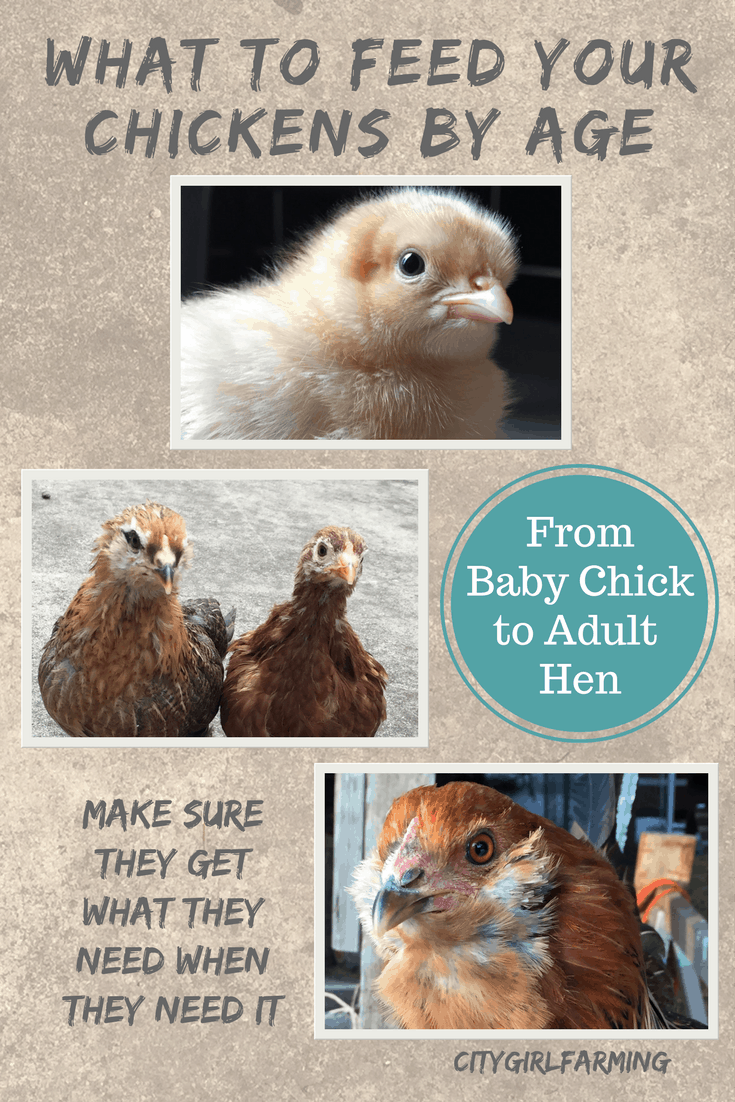
Back in the ‘olden days’ feeding chickens wasn’t a big deal: chickens more or less fended for themselves, maybe with a bit of scratch thrown to them from time to time. Of course, most of those chickens lived on a large acreage where they could dig up all sorts of plants, bugs, seeds and whatever else they could find (Manure piles!).
In our modern world, bugs and weeds are sprayed with chemicals in many areas and chickens don’t spend as much, if any, time free ranging. Because of that, a whole industry of chicken feed and treats have sprung up that didn’t used to exist. The wide selection of chicken feed is formulated with the needs of modern chickens in mind (their age, their function) and are good to give to your flock at the appropriate times, even if they have access to free range foraging (although they will need less of it if they can find food on their own although the feed companies will tell you otherwise).
So, what should you feed your chickens? And when? Here’s a breakdown.
Chicks
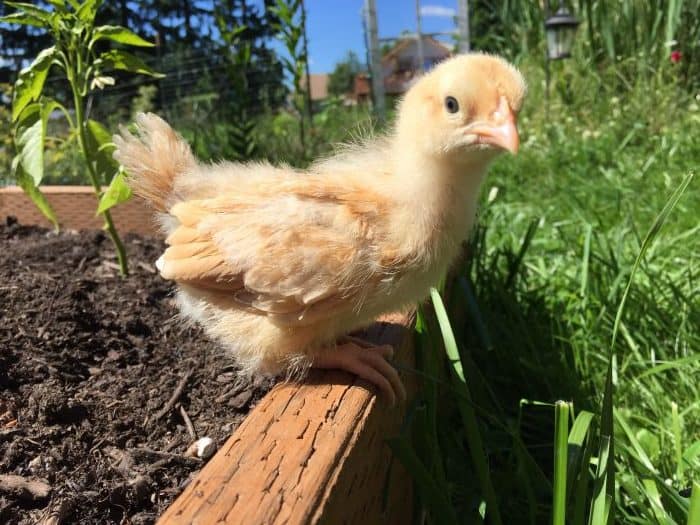
If you’re starting your flock with chicks, you’ll need to get a chick starter feed. This comes in both organic and non-organic, medicated and not. Chick starter contains the nutrients and high protein that quickly growing chicks need. (If you want help deciding whether to use medicated or non-medicated, here’s more information to help you make up your mind). You should keep your chicks on chick starter from day one until around 10-12 weeks.
Pullets

After about 12 weeks, your chicks are considered pullets. They’re not chicks anymore, but they’re not of egg laying age, either. Think of them more like teenagers. At this time, begin feeding your chickens a grower feed. This has less protein than the chick starter because while they’re still growing, they’re not growing at the rapid pace they were as chicks. This feed also has less calcium than the layer feed, since they’re not quite at egg laying age yet and don’t need all that extra calcium.
Layers
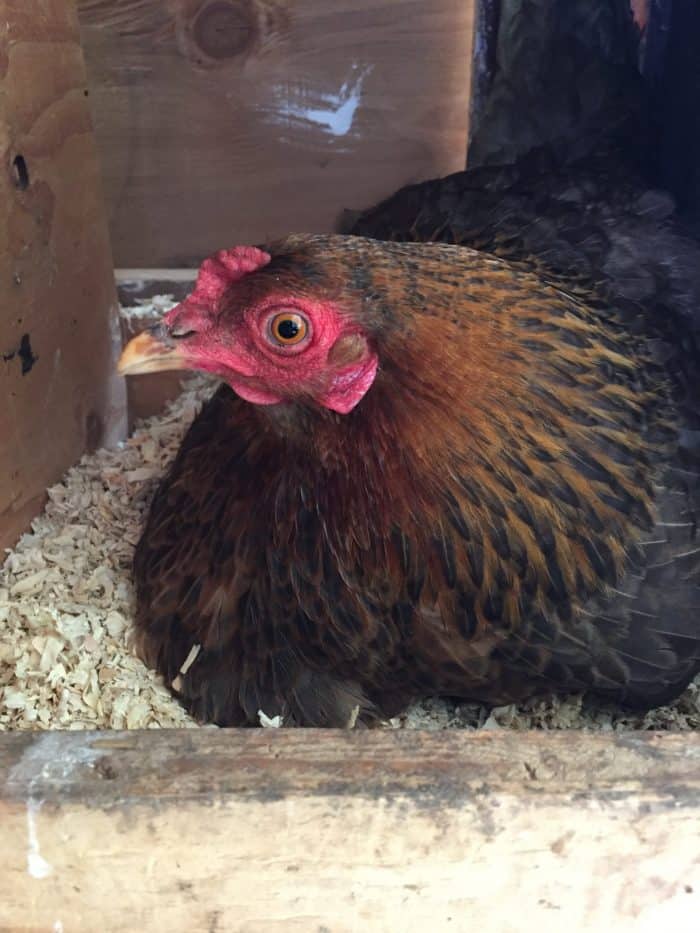
When a hen gets 5-6 months of age, she’ll begin laying eggs and it’s time to begin feeding chickens layer feed at this time. It has more calcium, to help them lay strong shelled eggs and to give them the added nutrients they need to lay several eggs a week (it’s hard work!). Layer feed comes in pellets or crumble. What you use is up to you as they contain the same ingredients. I personally prefer the pellets because I think they waste less of it than they do of the crumble. A LOT LESS.
Broilers
If you’re raising chickens for meat, they need their own kind of food as well. It’s formulated to feed these rapidly growing chickens the food they need to help them grow into nice, meaty birds.
All Ages
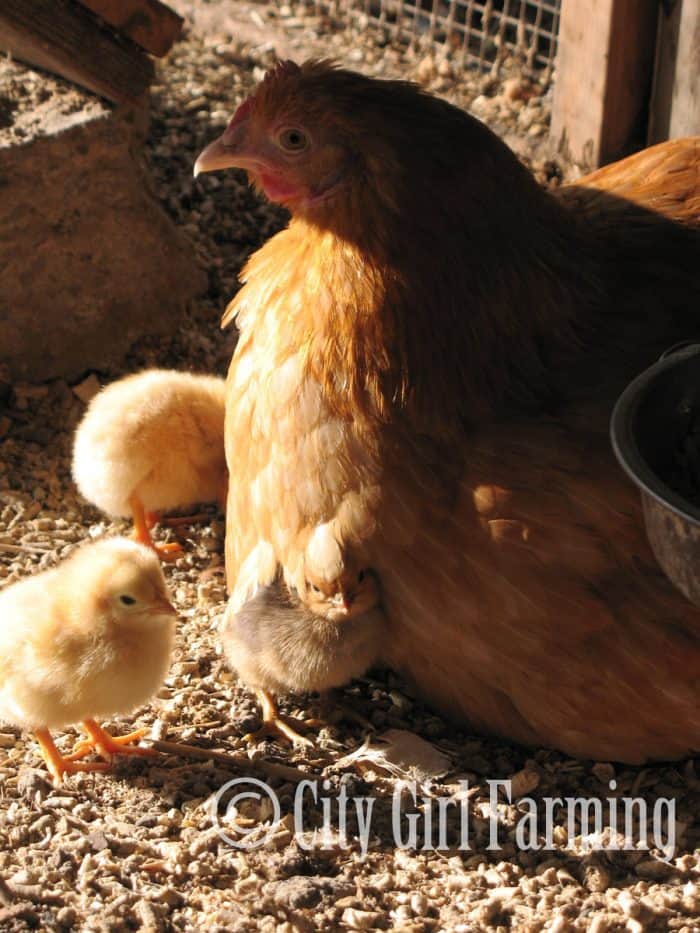
In addition to feeding chickens some form of feed, it’s also important to give them additional calcium (such as oyster shell or baked and crushed egg shells) and grit. The calcium, again, helps with egg production while the grit acts as ‘teeth’ inside their stomachs, helping to grind up all the food they’ve eaten.
Treats
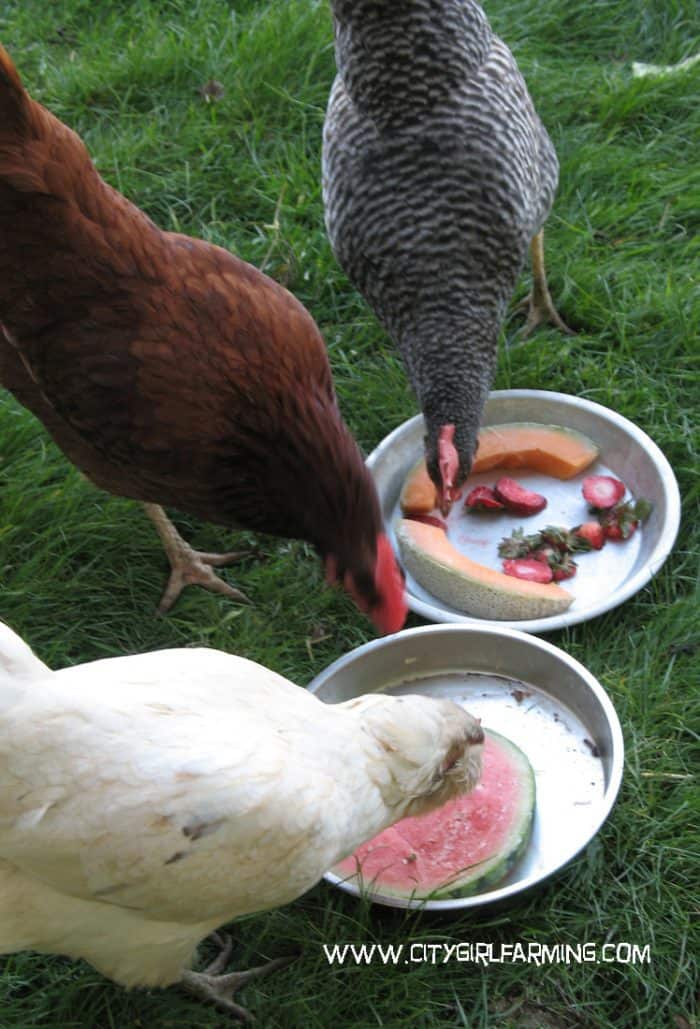
There are all sorts of treats you can feed chickens. Mine love a combination of cracked corn and bird seed with a bit of flax mixed in. They also love crickets and meal worms. There’s a wide variety of ‘extras’ you can feed your flock, just go easy on it. Chickens are a lot like children in this area. They’d rather eat candy than the stuff that’s good for them, so use treats in moderation. Also, cracked corn is something to avoid on hot days as it heats up the chickens (but is a great addition right before bed on cold winter nights).
Molting
When hens are molting, it’s a good idea to feed them a bit more protein. They won’t be laying eggs during this time as re-growing feathers takes all their resources. Added protein helps them with the hard job of feather growth. Just like with treats, you don’t need to go overboard. I usually feed them a tablespoon or so of added protein per day per hen. I feed them tuna, scrambled eggs, or shredded cheese. Just a little to help them chug along and get themselves covered back up before winter hits.

Scraps
Chickens also love to eat all sorts of leftovers. And almost anything is okay. I generally keep bread and rice products away from my hens, but that’s just a personal choice. I let them eat vegetable and fruit scraps though. And in the summer, when it’s hot, I freeze some of it before I feed them, to help them cool off. While almost anything goes when feeding scraps to chickens (in moderation), there are some things that are toxic and should be avoided. Here’s a list of what chickens shouldn’t eat, if you have questions.
Foraging

If given the opportunity to forage in a free range environment, chickens will also feed themselves. They love bugs, worms, slugs, weeds, and even your vegetable and flower gardens. With the massive invasion of stink bugs this year, I’m very happy that my hens love bugs. They ate stink bugs by the dozens, like they were popcorn. Mmmm. Good. A win/win for all of us (except the stink bug, of course).
I also plant a chicken foraging garden for the flock. You can read more about that here. And you can buy a special blend of chicken foraging mix for pretty cheap. It’s a great way to feed your chickens quality foraging food (for instance, the forage mix contains flax which increases the Omega levels in your eggs), if you have room to plant one.
If you’re interested in trying to grow enough plant materials to feed your chickens (for free) at least part of the year, here’s a good article: 12 Perinnial to Plant for Free Chicken Food.